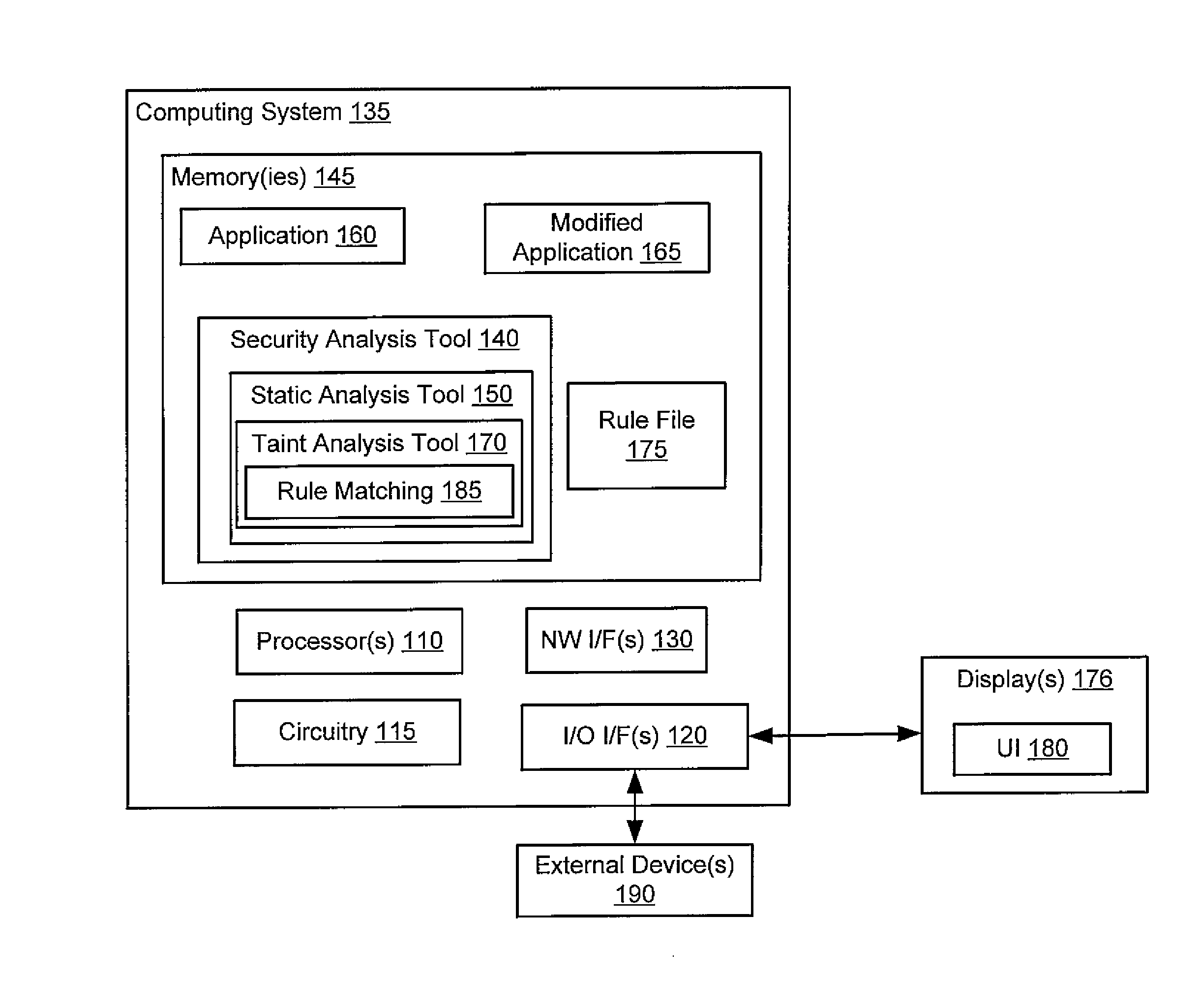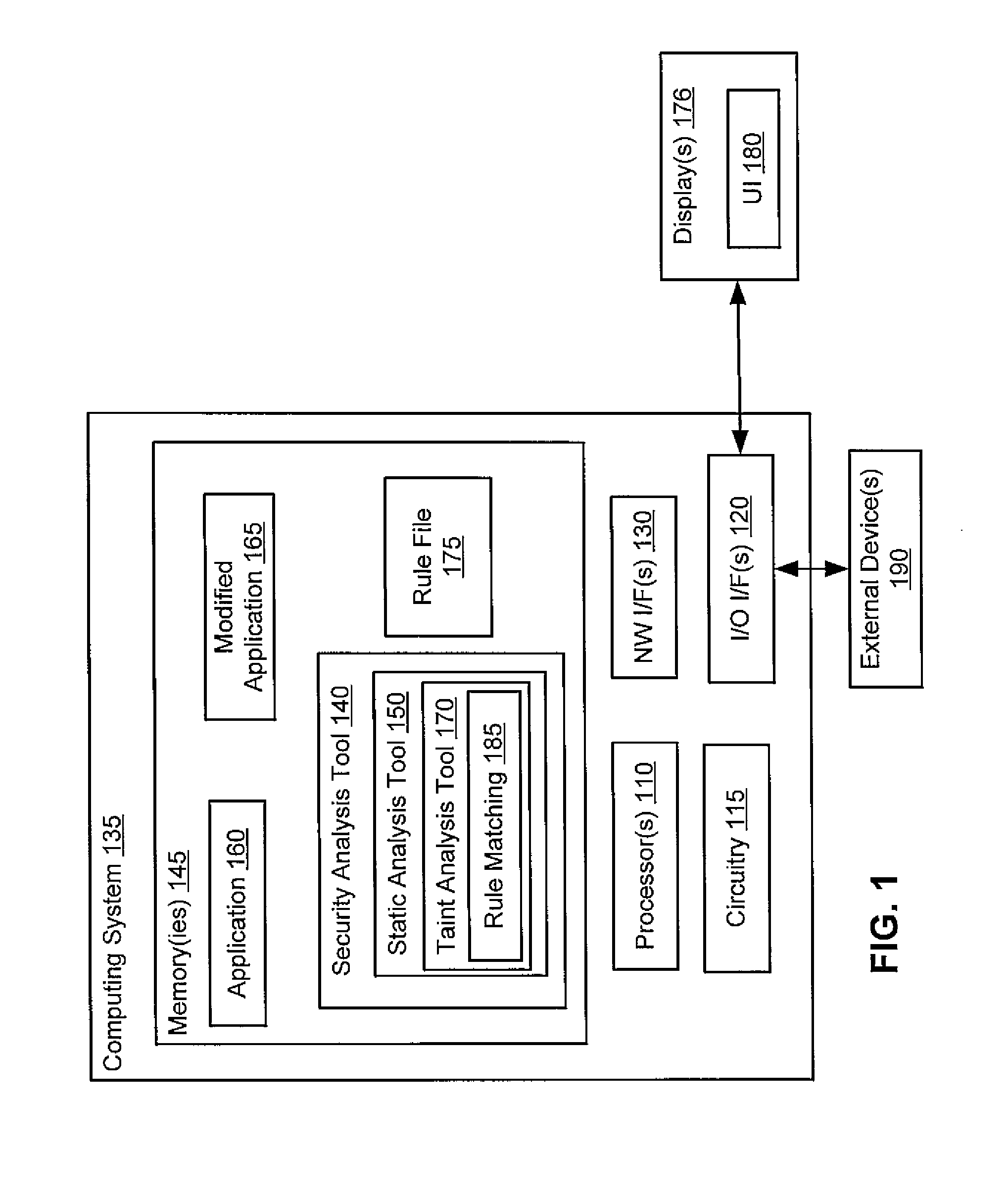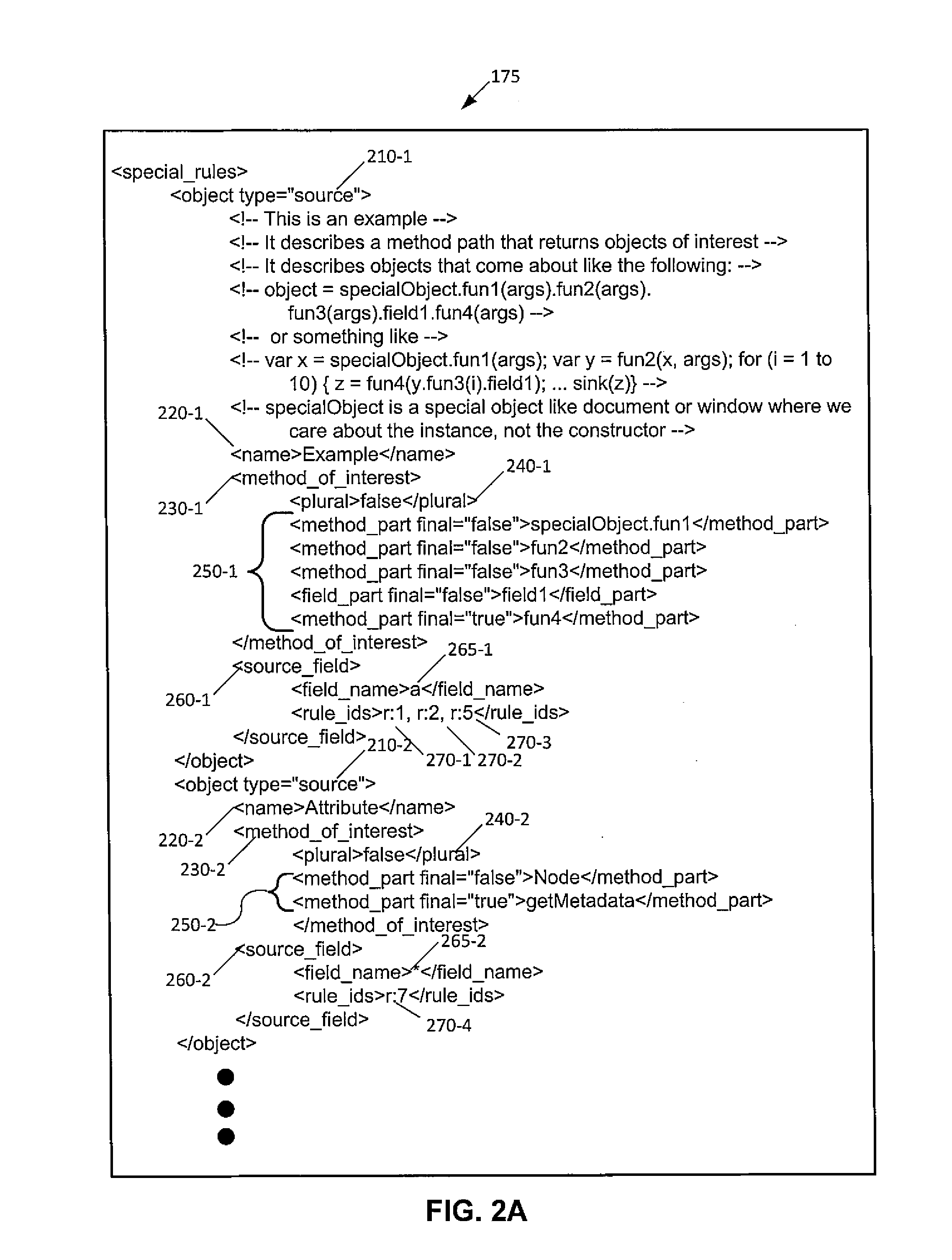Rule Matching In The Presence Of Languages With No Types Or As An Adjunct To Current Analyses For Security Vulnerability Analysis
a language type and rule matching technology, applied in the field of application code analysis, can solve the problems of information leakage and improper error-handling, information flow violations comprise the most serious security vulnerabilities of today's web applications, and the difficulty of automatically detecting such vulnerabilities in real-world web applications
- Summary
- Abstract
- Description
- Claims
- Application Information
AI Technical Summary
Benefits of technology
Problems solved by technology
Method used
Image
Examples
Embodiment Construction
[0017]As stated above, typical rules for taint analysis are based on types of objects. Thus, typical rules may specify sources, sinks, and sanitizers using types of objects. By contrast and by way of introduction, exemplary techniques herein identify objects of interest in a language, where the identification does not rely on typing of those objects. Thus, in an exemplary embodiment, rules no longer need to list the type of object or type of method that should be a source, sink, or sanitizer. Instead, rules may now describe a path to retrieve the objects or methods that are sources, sinks, or sanitizers. For example, in JavaScript elements of the DOM (document object model) are a source of a tainted flow and a rule that declares this might indicate the following: all objects retrieved from the DOM via the method document.getElementById are important, and if these objects have their innerText field read, the result of the field read will be a source for tainted flows. As is known, Ja...
PUM
 Login to View More
Login to View More Abstract
Description
Claims
Application Information
 Login to View More
Login to View More - R&D
- Intellectual Property
- Life Sciences
- Materials
- Tech Scout
- Unparalleled Data Quality
- Higher Quality Content
- 60% Fewer Hallucinations
Browse by: Latest US Patents, China's latest patents, Technical Efficacy Thesaurus, Application Domain, Technology Topic, Popular Technical Reports.
© 2025 PatSnap. All rights reserved.Legal|Privacy policy|Modern Slavery Act Transparency Statement|Sitemap|About US| Contact US: help@patsnap.com



